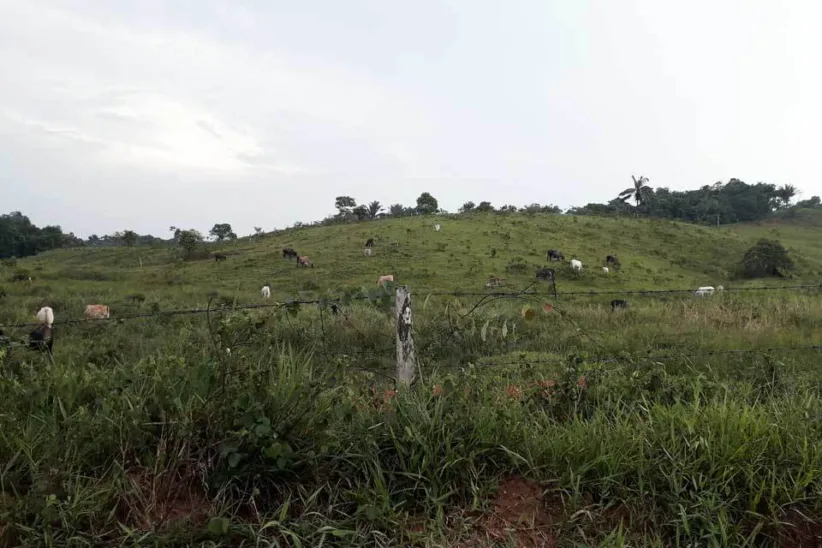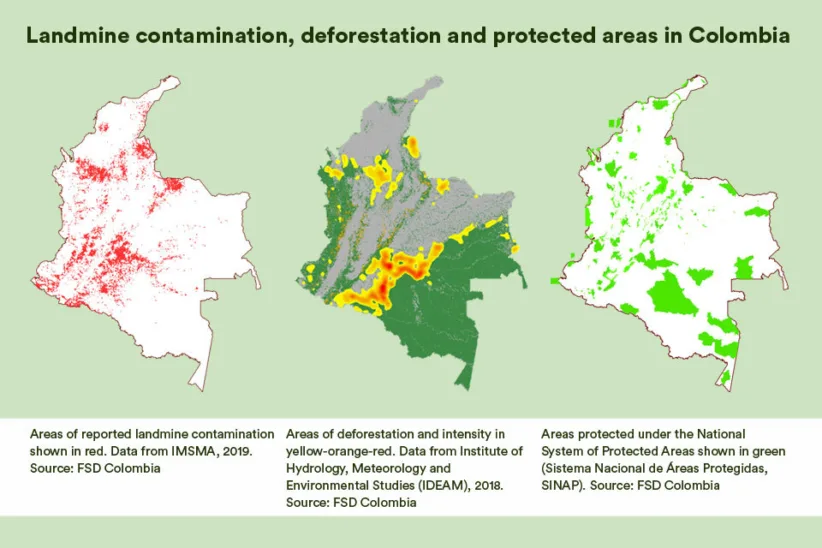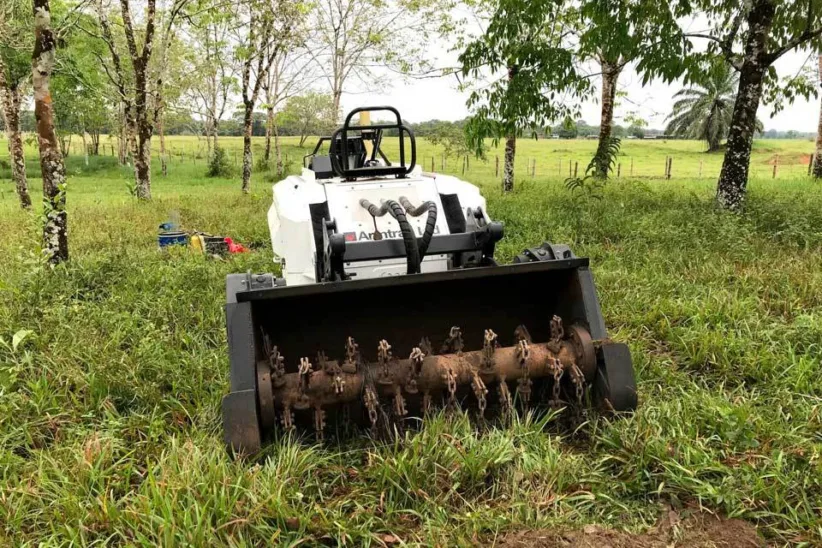Colombia’s rich natural heritage is key to its post-conflict recovery and sustainable development making it vital for humanitarian mine action to minimise its environmental footprint.

With more than 51,000 species of plants and animals, Colombia is ranked as one of the most biodiverse countries in the world. As part of their joint project to improve environmental safeguarding across Norwegian People’s Aid’s (NPA) mine action and disarmament programmes, Kendra Dupuy and Linsey Cottrell visited the Caquetá region of Colombia to learn from NPA’s Sergio Mahecha and Leidy Vargas about the environmental practices already in place, and the wider challenges that mainstreaming environmental safeguarding faces there.
Post-conflict environmental challenges
Colombia is facing a range of environmental pressures as a consequence of decades of conflict, including spiralling rates of deforestation and mercury and cyanide pollution from illegal gold mining. The country’s sixty-year civil war has also left a legacy of war-related contamination in the form of landmines and other unexploded ordnance (UXO). The country is also feeling the effects of climate change, with a rise in severe flooding and landslides. Although environmental impacts from mine action may be considered minor by some, good environmental practice is arguably even more important given the wider and combined significance of all environmental issues affecting Colombia.
Areas reported with the highest density of landmine and UXO contamination by Colombia’s Information Management System for Mine Action (IMSMA) also often lie within the regions most impacted by deforestation, and in some cases, within biodiversity rich nationally protected area

Environmental legislation, national mine action standards and best practice
Colombia has an array of environmental legislation in place, including licence and permit requirements, but its regulatory authorities face challenges in fully implementing this legislation to reduce wider environmental degradation. Moreover, until recently, there was no specific environmental legislation for the mine action sector. This changed in 2017, when Decree No. 1195 was issued by the Ministry of Environment and Sustainable Development. This Decree established environmental guidelines and a framework for avoiding environmental harm in humanitarian mine action tasks. To support the Decree, a National Mine Action Standard (NMAS) on environmental management is due for issue later this year and should provide the detail on mitigation measures required within the country.
In October 2019, the Colombian Mine Action Authority and the Swiss Foundation for Mine Action (FSD) held an inaugural workshop with mine operators to investigate the challenges and lessons learnt in environmental management. Some of the issues addressed in the workshop included soil and land use management, protection and use of water resources, vegetation clearance, protection of wildlife, working within protected areas, community links, record keeping and knowledge sharing. FSD has also developed an environmental toolbox containing specific advice on topic areas, such as identifying mulch and soil types to limit over-excavation, with more content in the pipeline.
NPA Colombia’s Sergio Mahecha and Leidy Vargas explained that once the NMAS is issued, environmental management procedures already embedded into standard operating procedures will be reviewed to check their compliance with the new NMAS. NPA Colombia has already developed environmental checklists as part of its quality management. Given their background as environmental engineers, both fully understand the importance of sound environmental practice in humanitarian mine action operations, and the broader need for greater environmental awareness for field staff, the authorities and local communities. NPA Colombia has also written guidance for setting up temporary camps, including how to establish latrines, grease traps for wastewater, water supply, bunds to contain potential fuel leaks, composting of organic waste and waste segregation.
"It is important for the National Authority to create a national guideline regarding environmental practices, and accompany humanitarian disarmament NGOs on the construction of their own procedures,” explained Leidy and Sergio. “So that the whole sector speaks the same language, including the national authority, NGOs, local environmental authorities and the monitoring body [the Organization of American States]. This way, the “rules of the game” are clear for all involved before, during and after operations, and the mitigation or compensation measures are implemented when required.
We believe mine action in Colombia is failing on this subject, especially considering the high level of biodiversity in the country that needs to be protected urgently, and the lack of environmental education of all actors involved, so it is vital that we as a sector give this the importance it requires.

The approach to vegetation removal is indicative of some of the current implementation gaps. The Colombian Decree stipulates a requirement for compensatory planting where vegetation clearance cannot be avoided, reduced or mitigated. However, there is no guidance for mine action operators on what is meant by compensatory planting, or how this should be done. Where planting is a requirement, there is a need for guidance and partnerships with organisations active in reforestation and tree planting initiatives to ensure a ‘right tree – right place’ approach, with informed species selection, community consultation and management planning. This would allow compensatory planting to properly establish, thrive and ultimately become an environmental asset.
Local communities have also raised concerns regarding the use of machines for vegetation removal when preparing areas for mine clearance. However, as machines may in some instances be environmentally beneficial, for example by aerating soil and increasing the dispersal of seeds, it would be useful to conduct a study to properly compare manual versus machine methods.
The future and challenges for humanitarian mine action in Colombia
The security situation can change quickly in Colombia and regrettably this was the case during our visit. Humanitarian mine clearance programmes in Colombia face risks due to delays in the allocation of new tasks and budgets, as well as a result of the security conditions. In terms of ensuring good environmental practices across the sector, the forthcoming National Mine Action Standard will be an important contribution. But with regional regulatory capacity limited, it is the duty of all humanitarian mine operators to continue to work responsibly.
Our sincere thanks to everyone at NPA Colombia who supported our trip, especially Sergio Mahecha, Leidy Vargas and the rest of the NPA team we met in San Antonio. We wish the whole team all the best for the future. Our thanks also to FSD Colombia for their assistance for this blog.
Kendra Dupuy is a Senior Environmental Adviser at Norwegian People’s Aid, Linsey Cottrell is CEOBS’ Environmental Policy Officer. Our joint project is funded by the Norwegian Ministry of Foreign Affairs.
